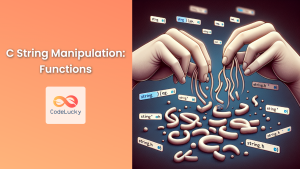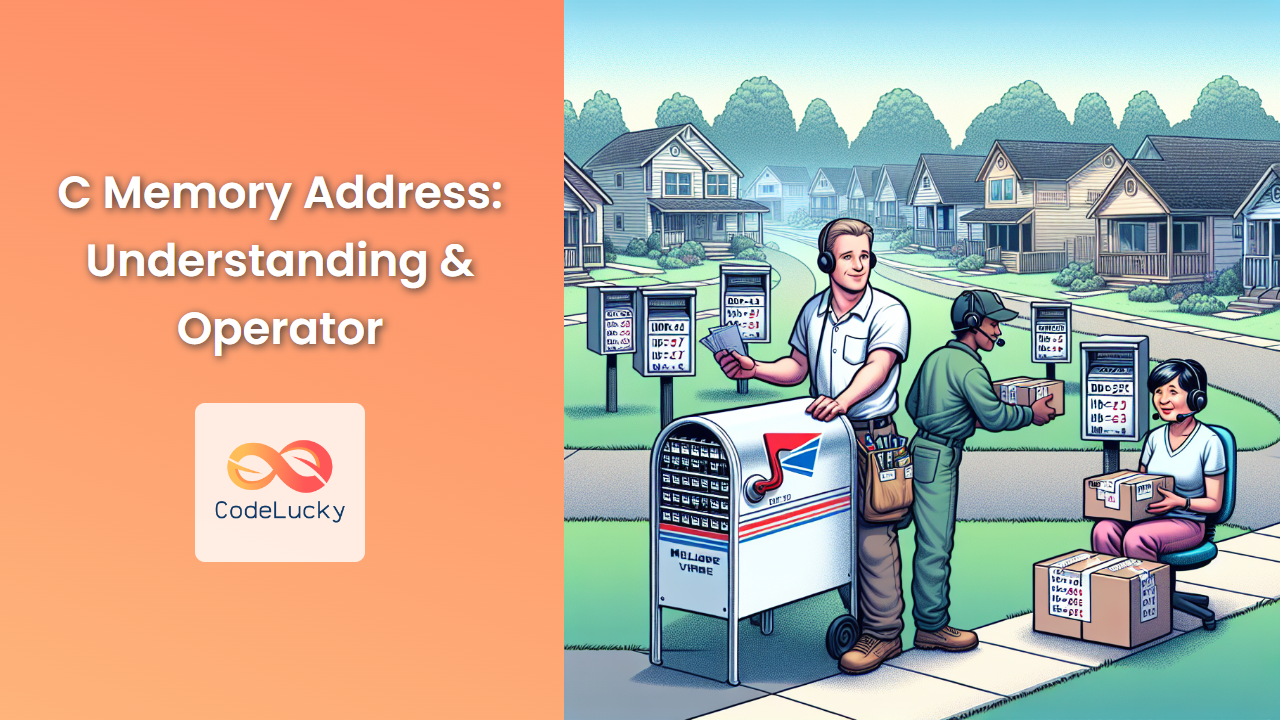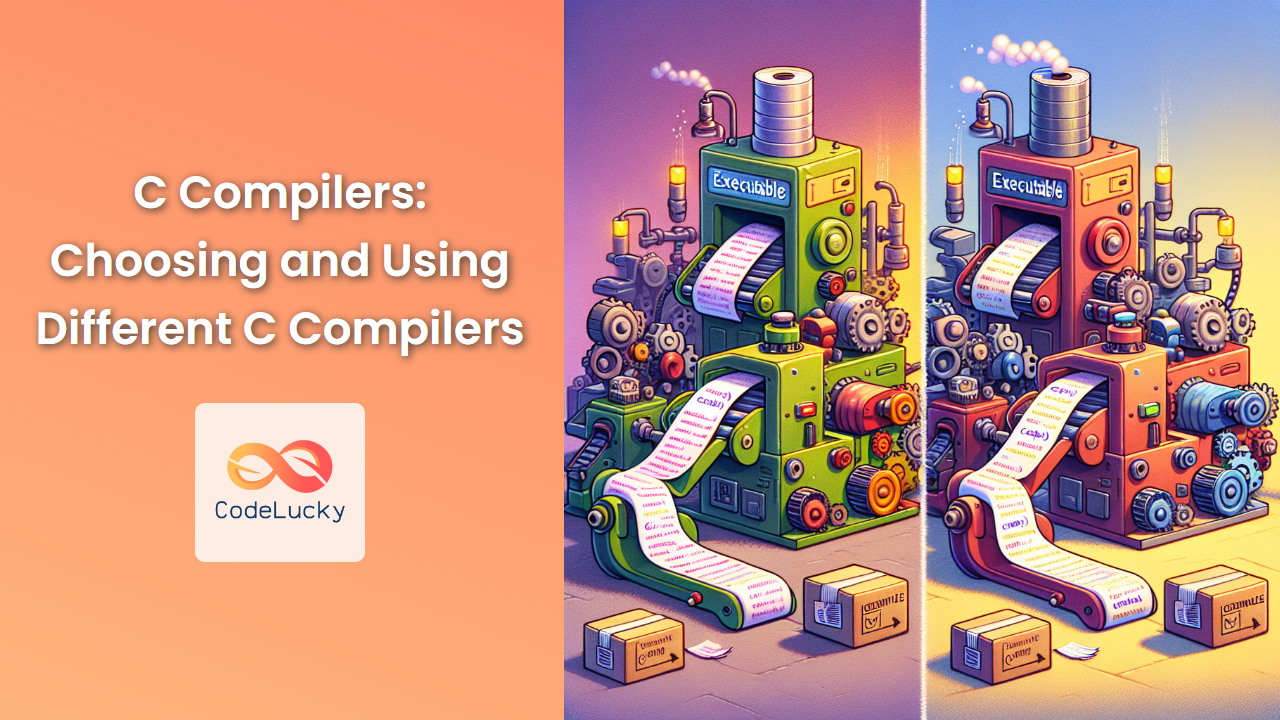C is a powerful and versatile programming language that has stood the test of time. Its influence can be seen in many modern programming languages, and it remains a popular choice for system programming, embedded systems, and high-performance applications. In this article, we'll dive deep into the basic rules and structure of C syntax, providing you with a solid foundation to build upon.
The Anatomy of a C Program
Let's start by examining the basic structure of a C program:
#include <stdio.h>
int main() {
// Your code goes here
printf("Hello, World!\n");
return 0;
}
This simple program demonstrates several key elements of C syntax:
-
Preprocessor Directives: Lines beginning with
#, like#include <stdio.h>, are preprocessor directives. They're instructions to the C preprocessor before the actual compilation begins. -
Main Function: Every C program must have a
main()function. It's the entry point of your program. -
Statements: Individual instructions in C are called statements. They end with a semicolon (
;). -
Comments: Text preceded by
//is a single-line comment. C also supports multi-line comments using/* */. -
Return Statement: The
return 0;at the end ofmain()indicates successful program execution.
Let's break down each of these elements in more detail.
Preprocessor Directives
Preprocessor directives are commands that are processed before the actual compilation of your code begins. They start with a # symbol and don't end with a semicolon. The most common preprocessor directive is #include, which tells the compiler to include the contents of another file.
#include <stdio.h> // Include the standard input/output library
#include "myheader.h" // Include a user-defined header file
#define PI 3.14159 // Define a constant
#define SQUARE(x) ((x) * (x)) // Define a macro
💡 Pro Tip: Use angle brackets < > for standard library headers and quotation marks " " for your own header files.
Functions
Functions are the building blocks of C programs. They encapsulate a set of statements that perform a specific task. Here's the general syntax of a function:
return_type function_name(parameter_list) {
// Function body
return value; // Optional
}
Let's create a simple function that calculates the area of a rectangle:
float calculate_area(float length, float width) {
return length * width;
}
int main() {
float area = calculate_area(5.0, 3.0);
printf("The area is: %.2f\n", area);
return 0;
}
Output:
The area is: 15.00
In this example, calculate_area is a function that takes two float parameters and returns a float value.
Variables and Data Types
C is a statically-typed language, which means you need to declare the type of a variable before using it. Here are some common data types in C:
| Data Type | Description | Example |
|---|---|---|
| int | Integer | int age = 25; |
| float | Single-precision floating-point | float price = 9.99; |
| double | Double-precision floating-point | double pi = 3.14159265359; |
| char | Single character | char grade = 'A'; |
Let's see these in action:
#include <stdio.h>
int main() {
int age = 25;
float height = 1.75;
char initial = 'J';
printf("Age: %d\n", age);
printf("Height: %.2f meters\n", height);
printf("Initial: %c\n", initial);
return 0;
}
Output:
Age: 25
Height: 1.75 meters
Initial: J
💡 Pro Tip: Use %d for integers, %f for floats, and %c for characters in printf() statements.
Control Structures
C provides several control structures to manage the flow of your program.
If-Else Statements
The if-else statement allows you to execute different code blocks based on conditions:
int age = 20;
if (age >= 18) {
printf("You are an adult.\n");
} else {
printf("You are a minor.\n");
}
Switch Statements
Switch statements are useful when you have multiple conditions to check:
char grade = 'B';
switch (grade) {
case 'A':
printf("Excellent!\n");
break;
case 'B':
printf("Good job!\n");
break;
case 'C':
printf("Average performance.\n");
break;
default:
printf("Need improvement.\n");
}
Loops
C provides three types of loops:
- For Loop: Used when you know how many times you want to repeat a block of code.
for (int i = 0; i < 5; i++) {
printf("%d ", i);
}
// Output: 0 1 2 3 4
- While Loop: Repeats a block of code while a condition is true.
int count = 0;
while (count < 5) {
printf("%d ", count);
count++;
}
// Output: 0 1 2 3 4
- Do-While Loop: Similar to while loop, but guarantees at least one execution of the code block.
int num = 10;
do {
printf("%d ", num);
num--;
} while (num > 5);
// Output: 10 9 8 7 6
Arrays
Arrays allow you to store multiple values of the same type in a contiguous block of memory.
#include <stdio.h>
int main() {
int scores[5] = {85, 92, 78, 90, 88};
printf("Scores: ");
for (int i = 0; i < 5; i++) {
printf("%d ", scores[i]);
}
printf("\n");
return 0;
}
Output:
Scores: 85 92 78 90 88
💡 Pro Tip: Array indices in C start at 0, not 1.
Pointers
Pointers are variables that store memory addresses. They're a powerful feature of C that allows for efficient memory manipulation.
#include <stdio.h>
int main() {
int x = 10;
int *ptr = &x;
printf("Value of x: %d\n", x);
printf("Address of x: %p\n", (void*)&x);
printf("Value of ptr: %p\n", (void*)ptr);
printf("Value pointed to by ptr: %d\n", *ptr);
return 0;
}
Output:
Value of x: 10
Address of x: 0x7ffd5e8e9994
Value of ptr: 0x7ffd5e8e9994
Value pointed to by ptr: 10
In this example, ptr is a pointer that stores the address of x. The * operator is used to declare a pointer (in the declaration of ptr) and to dereference a pointer (when printing the value pointed to by ptr).
Structures
Structures allow you to group related data items of different types under a single name.
#include <stdio.h>
#include <string.h>
struct Student {
char name[50];
int age;
float gpa;
};
int main() {
struct Student s1;
strcpy(s1.name, "John Doe");
s1.age = 20;
s1.gpa = 3.8;
printf("Student Name: %s\n", s1.name);
printf("Age: %d\n", s1.age);
printf("GPA: %.2f\n", s1.gpa);
return 0;
}
Output:
Student Name: John Doe
Age: 20
GPA: 3.80
Error Handling
C doesn't have built-in exception handling like some modern languages. Instead, it typically uses return values to indicate errors. The <errno.h> header provides macros for error handling.
#include <stdio.h>
#include <errno.h>
#include <string.h>
int main() {
FILE *file = fopen("nonexistent_file.txt", "r");
if (file == NULL) {
printf("Error opening file: %s\n", strerror(errno));
return 1;
}
// File operations would go here
fclose(file);
return 0;
}
Output:
Error opening file: No such file or directory
Memory Management
C requires manual memory management. The malloc() and free() functions are used to allocate and deallocate memory dynamically.
#include <stdio.h>
#include <stdlib.h>
int main() {
int *arr;
int n = 5;
// Allocate memory
arr = (int*)malloc(n * sizeof(int));
if (arr == NULL) {
printf("Memory allocation failed\n");
return 1;
}
// Use the allocated memory
for (int i = 0; i < n; i++) {
arr[i] = i * 10;
}
// Print the values
for (int i = 0; i < n; i++) {
printf("%d ", arr[i]);
}
printf("\n");
// Free the allocated memory
free(arr);
return 0;
}
Output:
0 10 20 30 40
💡 Pro Tip: Always remember to free dynamically allocated memory to avoid memory leaks.
Conclusion
This article has covered the fundamental syntax and structure of C programming. We've explored preprocessor directives, functions, variables, control structures, arrays, pointers, structures, error handling, and memory management. These concepts form the backbone of C programming and provide a solid foundation for more advanced topics.
Remember, mastering C syntax takes practice. Don't be discouraged if some concepts seem challenging at first. With time and experience, you'll become more comfortable with these constructs and be able to write efficient and powerful C programs.
Happy coding! 🚀💻



















